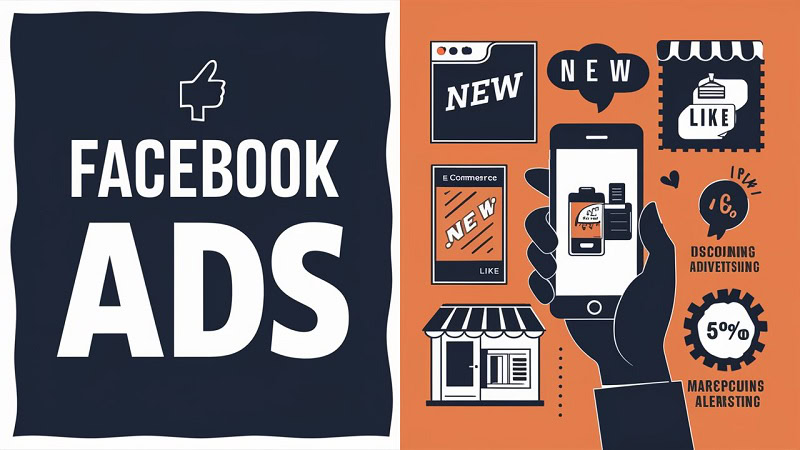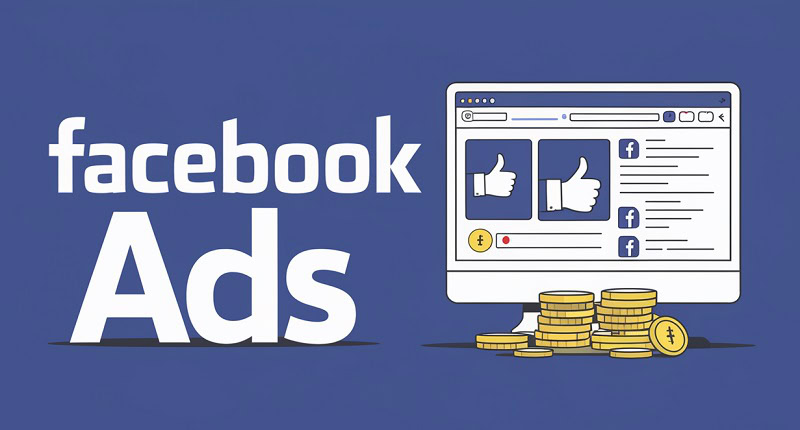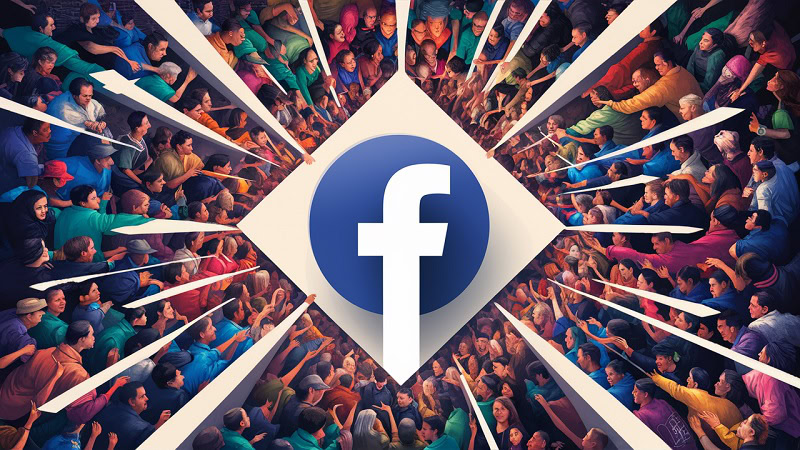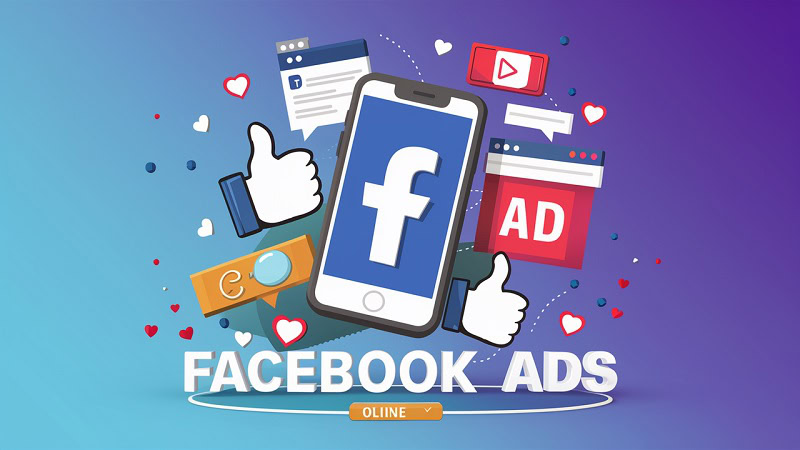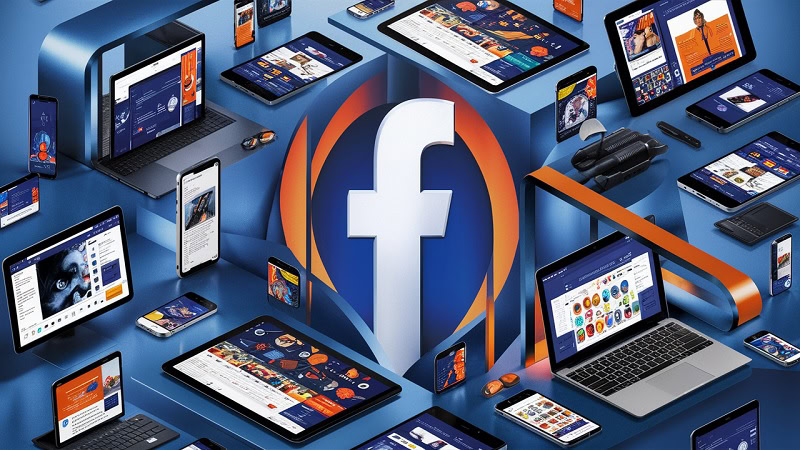
About author: Jack Evans brings his extensive experience in digital marketing to the table, specialising in paid social strategies that drive growth for e-commerce and DTC brands.
So, you’re preparing to launch your next paid social campaign.
You’ve calculated your budget, and you know your primary objective. All you need to do now is select your preferred marketing platform.
(Except that’s easier said than done.)

Boost E-Commerce ROI: Download Our Free CPA & ROAS Calculator
Facebook and Pinterest both seem like solid options, offering enormous reach, smart audience targeting, and handy advertising tools.
But which platform is going to deliver the best returns on your investment? Where can you reach your ideal customers and generate high-value conversions?
It’s a tricky decision. But we’re here to help.
We’re about to place Facebook and Pinterest ads under the microscope, comparing their strengths and weaknesses to help you make an informed decision for your next campaign.
As a specialist Facebook advertising agency and Pinterest ads agency we can help you with your campaigns just get in touch for a free consultation.
What are Facebook ads?
Facebook ads are served across the Facebook platform, appearing in various locations such as the main feed, Facebook Messenger, and Facebook Stories.
Ads on Facebook are available in a wide range of creative formats, and different types of placements can be used to achieve different objectives.
For example, while static image and video ads can be great for boosting brand awareness, formats like Collection ads are designed to drive cost-efficient purchases.
These ads can also be targeted towards granular audience segments, thanks to the colossal amount of data that Facebook collects about users. Whether you want to reach a huge global audience or a niche type of customer in a specific location, Facebook ads can help you to achieve your goal.
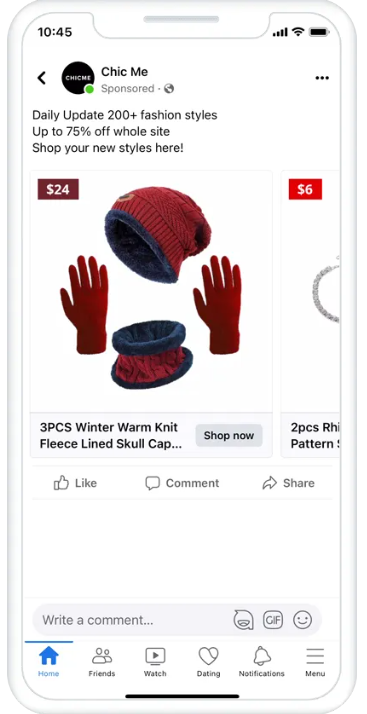
(Source: facebook.com)
What are Pinterest ads?
The Pinterest platform revolves around eye-catching visuals and content discovery.
Posts on Pinterest are served in the form of ‘Pins’, which are essentially visual bookmarks that users can engage with.
Pinterest ads are known as ‘Promoted Pins’ – they appear in the same way as organic posts (and can be clicked, saved, shared, etc) but can also be targeted to specific audiences.
Ads on Pinterest appear primarily in the main feed, meaning they’re highly visible and served alongside tons of engaging posts from other brands, publishers, and users. This is why attention-grabbing assets are key for Pinterest marketers – if you want to stand out in a competitive feed, you’ll need to nail your creative strategy.
(Source: pinterest.com)
Facebook & Pinterest – audience comparison
The ability to reach a large number of prospects is very important for paid social marketers.
So how do Facebook and Pinterest stack up in terms of audience size?

Up first, Facebook. The Facebook platform is absolutely enormous, boasting around 2.96 billion monthly active users. This isn’t surprising when you consider that Facebook was the first social network to gain one billion registered accounts.
Pinterest, on the other hand, attracts around 445 million monthly active users.
The platform obviously doesn’t compare to Facebook in terms of size, but it’s important to remember that not many social media apps can. On top of this, Pinterest users also tend to be highly engaged and active, and quality is often more important than quantity.
Facebook ads – the pros and cons
There are plenty of significant benefits available to advertisers on Facebook.
For starters, the scale of the Facebook user base is mind-blowing, meaning you can rapidly grow brand awareness and drive conversions at scale.
Facebook also offers a range of advanced targeting options, so you can be confident that you’re reaching the perfect audience for your products and services.
However, no platform is perfect.
Although Facebook does offer an extensive range of ad formats, these placements are spread out across the network (i.e. Stories, Messenger, In-Feed) and the home feed is a fairly cluttered environment. This means that unless your ads instantly capture attention, they can easily be overlooked.
Pinterest ads – the pros and cons
Pinterest advertising can be extremely effective for a number of reasons.
Firstly, the Pinterest platform is built to showcase quality visuals.
Ads are displayed in a clean and streamlined feed, so if you’re equipped with eye-catching creative assets, you have a good chance of grabbing attention.
Pinterest users are also highly receptive to brand communications, which is great news for marketers. 46% of weekly Pinterest users have discovered a new product through the platform, and 97% of the top searches on Pinterest are unbranded, so you’re reaching an audience that’s ready and willing to engage with your ads.
But what about the potential downsides of Pinterest marketing?
As we’ve already covered, Pinterest attracts a relatively small monthly audience when compared to larger platforms, so if your priority is reach you may want to explore a different option.
The differences between Pinterest ads and Facebook ads
Demographics & Audiences
We’ve already covered the size of the Pinterest and Facebook audiences. But how do these users compare in terms of a demographic breakdown?
Around 44% of Facebook users are women, compared to a whopping 77% on Pinterest. If you’re promoting products that appeal specifically to a female audience, Pinterest provides you with a major opportunity.

When it comes to age, the largest segment on Facebook is 25-34 (31%) – Pinterest data tells a similar story, with the same age group making up 39% of the user base.
Facebook and Pinterest both attract a fairly balanced audience across age groups, but in terms of gender, there’s a noticeable female skew on Pinterest.
Cost Comparison
How much do Facebook ad costs differ from Pinterest ad costs?
Below are some average figures for both platforms across popular metrics.
| CPM (Cost Per Mille) | $7.19 | $2-$5 |
| CPC (Cost Per Click) | $0.97 | $0.10-$1.50 |
| CPA (Cost Per Acquisition) | $5.47 | $6-$10 |
Based on these average costs, you can expect to pay a higher CPM on Facebook, but with the potential to drive cheaper conversions. Both networks are relatively similar in the CPC category.
However, it’s important to remember that these are just average costs. Your own costs will vary wildly based on your industry, target audience, ad quality, bidding strategy, and numerous other factors.
ROI
It’s very difficult to compare ROI between social platforms because there isn’t a guaranteed return on investment for any network, advertiser, or campaign.
However, what we can do is look at CTR as a proxy.
Every ad click represents an opportunity for a website conversion. The more clicks you’re likely to drive on a social media platform, the higher your chance of generating sales, and the better your ROI will be.
Below is the average CTR for Facebook versus the average CTR for Pinterest, based on performance across all industries.
| CTR(Click Through Rate) | 0.9% | 0.28% |
Across all industries, Facebook delivers a higher average CTR, which provides you with a better opportunity to improve ROI. Although your ROI will be influenced by a huge number of variables, Facebook offers a strong platform for cost-efficient advertising.
Targeting Options
The ability to reach targeted, relevant, and profitable audiences is incredibly important for social media marketers.
So which platform is better equipped in the targeting arena?
There are actually a lot of similarities between Facebook and Pinterest when it comes to audience targeting. Both platforms offer several ‘standard’ targeting segments, such as:
- Demographic (based on gender, age, location, language)
- Interest (based on content engagement, page follows, etc)
- Device (based on operating system, device model, etc)
Facebook and Pinterest also both allow for pixel-based retargeting, which can be hugely cost-effective.
However, there are a couple of key differences to flag.
Facebook has been harvesting user data for a long time, and if we’re looking at building super granular audience segments, the platform probably has a slight advantage.
In saying that, since Pinterest is essentially a visual search engine, it also enables advertisers to leverage keyword targeting. This can be extremely effective in helping brands to identify buyer intent, so Pinterest shouldn’t be underestimated in the targeting discussion.
Engagement
Users interact with ads differently on Facebook and Pinterest, which means comparing engagement metrics is tough. While Facebook ads are often just viewed or clicked, Pinterest ads (i.e. Promoted Pins) can be clicked, saved, and shared.
However, although there isn’t a definitive winner in this round, it’s fair to say that the Pinterest platform is built for high engagement.
The entire Pinterest network is designed around content discovery, and users are encouraged to tap and share posts as much as possible. Data suggests that the average Pin is saved 11 times, which can lead to a rapid increase in organic reach and engagement.
Buyer Intent
Both Facebook and Pinterest allow brands to set up pixel-retargeting, which is vital for identifying buyer intent.
Through pixel events (i.e. product page clicks, add-to-cart, checkout visits) you can target shoppers based on specific signals, helping you to reach and convert hot prospects with clear purchase intent.
However, Pinterest has a secret weapon here.
Advertisers can also utilise keyword targeting on the Pinterest platform, meaning they can target users based on searches for specific products and services. This is a serious advantage when you’re looking to refine your targeting and understand buyer intent.
Ad Formats
Keen to experiment with a wide range of creative ad placements? Let’s examine which platform comes out on top in the ad format department.
Brands can use the following ad formats on Pinterest:
- Image ads
- Video ads
- Shopping ads
- Collection ads
- Carousel ds
- Idea ads
While Facebook offers these ad types:
- Image ads
- Video ads
- Carousel ads
- Stories ads
- Collection ads
- Messenger ads
As you can see, there’s plenty of crossover here. Popular formats (i.e. image, video, Carousel, Collection) are available on both networks, and both also offer placements that are designed to drive online purchases – Shopping ads on Pinterest, and Advantage+ Catalog ads on Facebook.
While there are some nuances to understand between the platforms, we’ll call this category a draw.
Campaign Features
Pinterest and Facebook are both packed with handy marketing features that help advertisers to maximise performance.
For example, fully automated bidding is available on both networks.
Automated bids can help you improve efficiency and lower acquisition costs, and the Facebook and Pinterest algorithms are highly advanced.
You can also launch dynamic ads on both networks, through Advantage+ campaigns on Facebook and Dynamic Retargeting campaigns on Pinterest. If you’re looking for smart campaign features that will boost performance, neither platform will disappoint.
Ease Of Use
Both of these social networks recognise the importance of advertiser revenue, which is why they’re designed to be intuitive, accessible, and convenient for marketers.
Although Facebook may offer slightly more advanced and complex audience targeting strategies, with a little bit of time, you’ll find both platforms easy to use.
Plus, both websites provide customer support and account teams that can resolve any issues or questions you might have.
Tracking results on Facebook and Pinterest
If you’re investing your hard-earned cash into a social media marketing campaign, you need to understand how your ads are performing.
Fortunately, tracking performance on Facebook and Pinterest is a breeze.
The Facebook Ads Manager and Pinterest Ads Manager are easy-to-use, simple dashboards that allow you to manage every aspect of your campaigns from a single location.
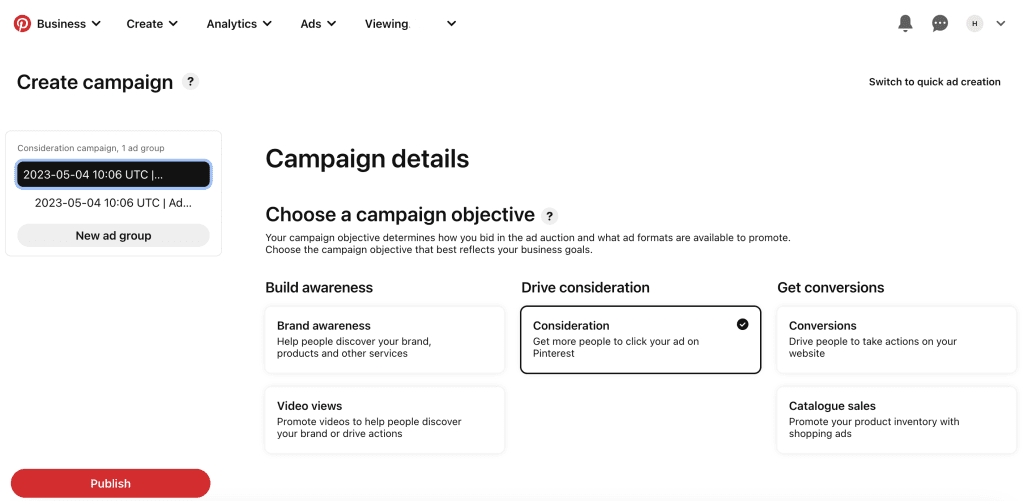
Pinterest Ads Manager (Source: pinterest.com)
Using the ads manager on both networks enables you to set up audience targeting, launch creative assets, and most importantly, monitor performance. You can instantly review all of your core campaign metrics in both platforms, as well as download custom reports.
Setting up A/B tests on Pinterest and Facebook
Running frequent, data-driven A/B tests is one of the best ways to dramatically improve performance on Facebook and Pinterest.
And if setting up a testing strategy sounds a little complex, don’t panic. Launching and analysing A/B tests is actually pretty simple.
To kick things off, decide on a test variable that you’d like to experiment with. There are plenty of variables that you can tweak, including:
- Headlines
- Ad text
- CTAs
- Creative assets
- Landing pages
Once you’ve made your selection, set up two separate ads (one with the new variable included) with an equal budget, target the same audience, and launch. You’ll then be able to identify the best-performing variables, optimise your campaigns, and boost performance.
Facebook even allows you to set up 100% automated A/B tests, which makes the process infinitely easier.
Which platform should you use?
Should you invest your precious marketing budget with Facebook?
Or is Pinterest going to deliver the results you need?
Pinterest is a highly visual social platform that can help you to showcase product visuals and reach engaged audiences. If you have bold creative assets that can captivate potential customers, Pinterest is one of the best places to utilise them.
However, for newer advertisers, Facebook is an extremely reliable platform that can deliver outstanding results.
With advanced targeting, versatile ad formats, and an enormous reach, the Facebook network is a solid option for marketers from every industry. If you only have enough budget for a single platform, you can rely on Facebook to perform.
Using Facebook & Pinterest ads in combination
If you have sufficient budget to spread across two channels, it’s definitely worth thinking about running Facebook and Pinterest ads in tandem.
Each of these platforms offers unique tools, audiences, and marketing opportunities that can help you to crush your objectives – so why not harness the power of both?
To maximise the performance of Facebook and Pinterest, make sure that you’re providing both partners with a healthy budget. Social media algorithms need a decent amount of spend to make effective optimisations, so maintain a balance between the networks.
You should also try to gather and implement as many cross-platform learnings as possible.
Facebook and Pinterest are very different channels, but that doesn’t mean you can’t apply insights across the networks. If you identify an audience or creative message that’s performing well on one platform, don’t hesitate to replicate it on the other.
They are both highly effective marketing platforms, and when they’re used strategically in combination, the results can be mind-blowing.
Just remember to stick to proven best practices for each platform and remain diligent with your optimisations. Good luck!
Related
- How Much do Pinterest Ads Cost?
- Facebook Ads vs Instagram Ads – Which Is Best For Your Brand?
- TikTok ads vs Facebook ads – Which Is Best For Your Brand?


